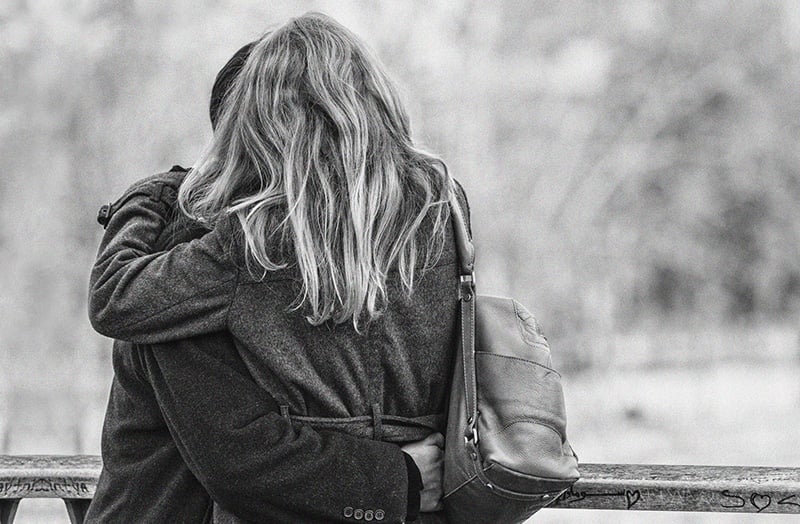
I wrote here an in-depth post about attachment theory, which I personally I find extraordinarily helpful and elucidating. And yet since the book Attached’s release in 2010, despite its many strengths it has also received its share of criticisms.
One is that it comes down too hard on avoidantly attached individuals, not showing enough empathy and understanding for them. Another is that it’s not always helpful to conceptualize feelings and behaviors into rigid categories. Envisioning them as more along a spectrum not only captures nuance, but gives people space to breathe and the motivation to change.
Here’s an exploration of those criticisms as well as other limtiations of attachment theory as it was originally presented when the book Attached first came out.
…
1. It feels somewhat reductive.
Labels can be helpful templates. Adopting one can provide belonging, help people feel less alone, and connect us to necessary resources as well as larger community. Power exists in group identification.
As Esmé Weijun Wan writes in The Collected Schizophrenias, “Some people dislike diagnoses, disagreeably calling them boxes and labels, but [I’ve always found comfort in preexisting conditions.] I like to know that I’m not pioneering an inexplicable experience.”
They may also come with the implicit understanding that you don’t necessarily click every single box that defines it.
And yet labels can also be polarizing. Some people feel reduced and stigmatized by them. They can at times, ironically, complicate the journey to arriving at the real root of the issue.
As Mark Hyman put it:
“These descriptions (in the DSM) tell us nothing at all about why those symptoms occur, or how people with exactly the same symptoms may have them for many different underlying reasons and need different and individualized treatment as a result.”
Applied specifically to attachment theory, from The New York Times:
“Self-identifying as an anxious attachment type or an avoidant attachment type, or labeling someone else — those words become insurmountable. You’re creating these barriers of: I can’t get out of this.”
It’s primarily in stigma-free climates that people feel safe enough to acknowledge and confront their issues. It’s within them that they feel freer to become their better selves.
…
2. It puts too much emphasis on early experiences.
We’re shaped by so much more than solely our birth families. Our friendships, acquaintances, teachers, messages from the larger culture, even one-time traumatic encounters all contribute to our way of relating to the world and our ability to trust. The pattern of people we date can further reinforce a certain type of attachment style.
People may struggle with attachment difficulties despite having had what they consider to be a secure upbringing. Maybe you entered a marriage mostly secure, with a highly traumatized, unhealed insecure partner. Maybe over the years, that dynamic chipped away at some of your security, so you now lean more anxious or avoidant — but don’t understand why.
PIVOT Relationship Coaching wrote that going through a divorce as an adult “can affect your attachment style and cause issues in any one of the four forms of attachment.”
The authors acknowledged:
“Even individuals who are certain of themselves and fall into the secure attachment categories can develop difficulties with trusting others, become emotionally unavailable, at least for a time, suffer from low self-esteem, experience discomfort in future relationships, and become less able to adequately regulate their emotions.”
…
3. It offers little hope for anxious and avoidants to heal together. It gives secures an almost God-like power and doesn’t account for potential growth between two insecure types within a relationship.
According to the New York Times article cited earlier:
“One of the primary knocks against the book, from its critics: Its view toward intimacy issues is often tilted at finding partners who suit one’s own attachment style — either one that matches, or someone with a secure attachment style — rather than mending relationships between two conflicting attachment styles, which the book dedicates some real estate to, but not a ton.”
In fact, though It’s difficult work, anxiouses and avoidants can move towards security with each other inside a partnership. They can grow with their partner, realizing that security is a climate created by two people. That it can flourish when both are on board. And when both wholeheartedly believe that what you put in affects what you get out.
Especially when the chemistry, values, and interests is strong, each can find ways to resolve their past hurts and forge a healing connection.
Counselor Casey Tanner, who goes by the handle @queersextherapy on Instagram, is one example of a person whose relationship involved such growth. She acknowledges that her and her partner’s attachment styles ebb and flow, but that she is “solidly the more anxious one” while her partner leans somewhat more avoidant.
Still, the two have mutual empathy and continually strive to work within an awareness of the other’s respective style. Having learned the language of the other’s attachment makes them less likely to misinterpret one another.
…
4. It isn’t particularly high on compassion or understanding for the avoidant perspective.
I recall how years ago, my parting hug with a woman I dated (who had avoidant tendencies) was one of the most emotional I’ve shared with anyone. I could feel it in her body how much she cared. It really brought home for me how nuanced avoidance and emotional unavailability can be.
The book suggests that avoidantly attached individuals don’t care as deeply as their anxious partners. Yet it’s not always a clearcut case of this person is 100 percent shut-down and doesn’t care. It can also be a case of, this person might deeply fear what they also deeply want.
Many avoidantly attached individuals experience very deep pain and distress about their relationships. They just may not show it in the same way that their anxiously attached counterparts do.
Authors of the book now acknowledge this shortcoming. According to the New York Times article:
“He even conceded what he would do differently if he wrote it now, which is to emphasize the need for empathy toward avoidant attachment styles, who suffer as much (if not, in many ways, more so) than those with anxious attachment styles. Their instinctive aversion to intimacy can translate to more broken relationships with people they genuinely love, and thus, more loneliness, despite deeply desiring companionship.”
…
In short: humans are infinitely complex. Often too complex to be summed up by a single explanation alone.
We are the way we are due to myriad reasons; some distinct and unrelated, others interlocking and overlapping. The full journey to self-comprehension requires shining light on all of those pieces, as well as how they interact — the totality of which exceeds what one theory can account for.
Still, though attachment theory can’t explain everything, it can still function as an immensely helpful framework. Take and apply what you see fit!
—
This post was previously published on medium.com.
***
All Premium Members get to view The Good Men Project with NO ADS. Need more info? A complete list of benefits is here.
 Compliments Men Want to Hear More Often Compliments Men Want to Hear More Often |
 Relationships Aren’t Easy, But They’re Worth It Relationships Aren’t Easy, But They’re Worth It |
 The One Thing Men Want More Than Sex The One Thing Men Want More Than Sex |
 ..A Man’s Kiss Tells You Everything ..A Man’s Kiss Tells You Everything |
—–
Photo credit: Markus Winkler on Unsplash
The post What Are the Limitations of Attachment Theory? appeared first on The Good Men Project.

